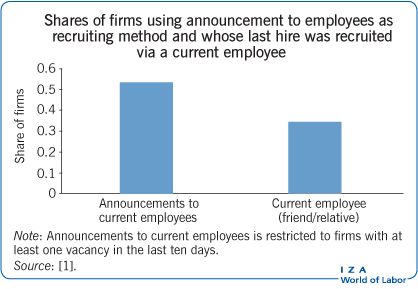Elevator pitch
Companies frequently hire new employees based on referrals from existing employees, who often recommend friends or family members. There are numerous possible benefits from this, such as lower turnover, possibly higher productivity, lower recruiting costs, and beneficial commonalities related to shared employee values. On the other hand, hiring through employee referrals may disadvantage under-represented minorities, entail greater firm costs in the form of higher wages, lead to undesirable commonalities, and reflect nepotism. A growing body of research explores these considerations.
Key findings
Pros
Employees that are hired via referrals have lower turnover relative to non-referred employees.
Referred employees may have higher productivity than non-referred employees.
Firms may incur lower recruiting costs when hiring employees via referrals.
“Good homophily”: When firms hire referred employees, their workforce becomes more likeminded; this can be a positive if workers share values or characteristics that are desirable.
Cons
It is possible that hiring based on employee referrals could disadvantage women or minorities.
Referred employees sometimes receive higher wages relative to non-referred employees, which entails increased costs to the firm.
“Bad homophily”: Firms get employees like their existing employees; for example, firms might get less demographic diversity and/or employees with less diversity in opinions and ideas.
Referral hiring may reflect nepotism; friends and family may be hired instead of the best available candidates.
